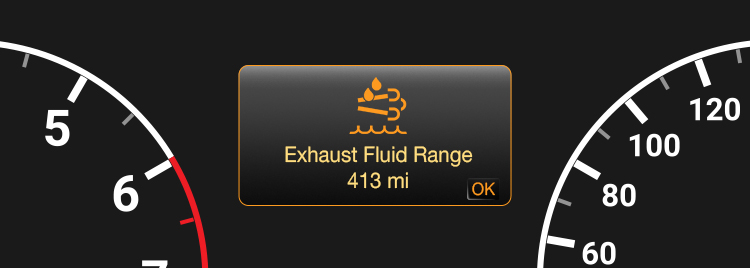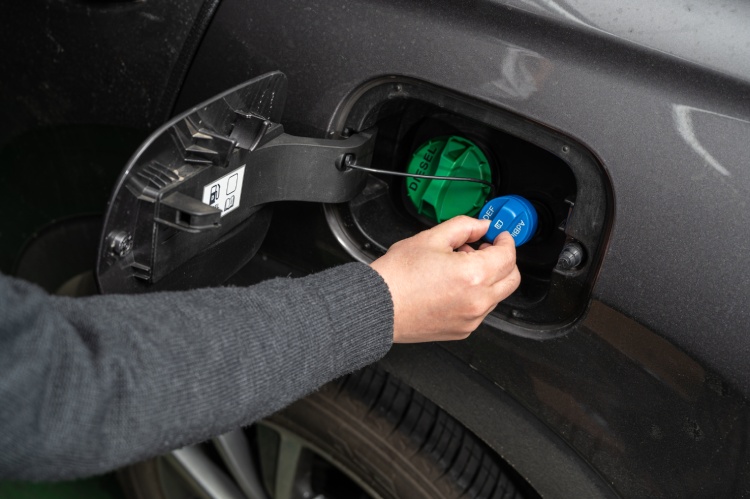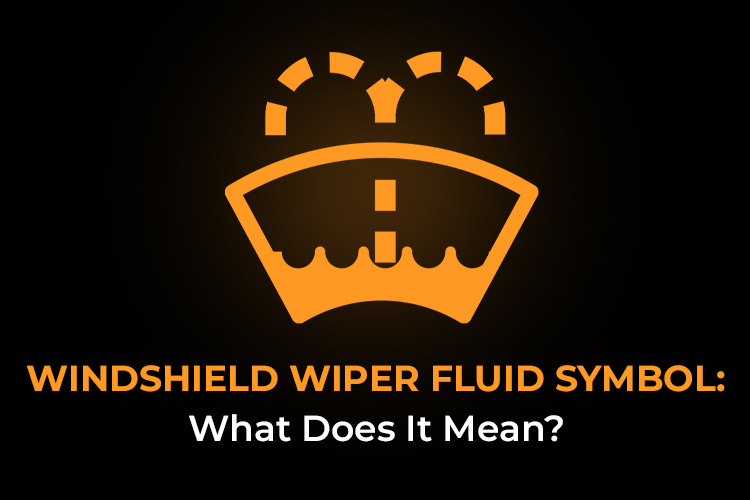Seeing the DEF light appearing on your car dashboard and wondering what it means?
Don’t worry!
In this article, I will provide you with all the information you need to know about the diesel exhaust fluid (DEF) light, including its meaning, potential causes, and steps for promptly diagnosing and fixing the issue.
Are you ready? Let’s dive into the details!
What Does It Mean When the DEF Light Comes on?

Diesel Exhaust Fluid (DEF) or AdBlue is a fluid made up of urea and deionized water that is used to reduce the emissions of harmful nitrogen oxides (NOx) from diesel engines.
When the DEF light comes on, it indicates a low DEF level, contaminated DEF, or malfunction in the system.
If the problem is not fixed, the light will continue to flash. Your car will typically go into limp mode, which reduces engine power and speed.
Sometimes, the check engine light will also appear with the DEF light. You should diagnose and fix the problem as soon as possible to avoid damaging your vehicle’s emission system.
Can You Drive With the DEF Light?
Yes, you can drive as long as there are no other warning lights or signs of engine problems. However, you should take immediate action to refill the DEF tank as soon as possible. Ignoring the DEF warning light can lead to serious problems with the vehicle’s emissions system and may even cause your vehicle to break down.
So how far can you drive with it?
Most diesel vehicles will provide a range of miles that you can travel before the DEF tank is completely empty, so you should use this information to plan your refilling accordingly.

Why Is My DEF Light On?
Low Diesel Exhaust Fluid Level (Most Common Cause)
The DEF is consumed over time, just like fuel. Thus, when the DEF level drops, the DEF light will turn on to alert you to refill the tank.

However, a potential reason for a low DEF level is a leak in the DEF system. Leaks can occur in various components, including the tank, supply lines, or injector system. In this case, it is essential to have your car inspected to identify and repair any leaks.
Contaminated Diesel Exhaust Fluid
Contamination from foreign substances such as dirt, dust, or other chemicals can cause the DEF to be less effective in reducing NOx emissions.
When the system detects contaminated DEF, it triggers the DEF light to come on.
Clogged Injector
The DEF system injects a small amount of fluid into the exhaust stream of the engine, where it reacts with the harmful nitrogen oxides (NOx) to convert them into harmless gases. If the injector that sprays the DEF fluid into the exhaust stream becomes clogged with debris or deposits, it may cause the DEF light to come on.
Malfunctioning Sensors
The DEF system in your diesel vehicle relies on several sensors, such as:
- DEF level sensor measures the level of fluid in the DEF tank.
- DEF quality sensor measures the quality of the DEF fluid in the tank, including its concentration and purity.
- DEF pressure sensor measures the pressure of the DEF fluid in the system. The sensor is used to ensure that the correct amount of fluid is injected into the exhaust stream at the right pressure.
- NOx sensor measures the level of nitrogen oxides (NOx) in the exhaust stream of the engine.
If one of these sensors is malfunctioning or sending inaccurate data to the vehicle’s computer, it may trigger the DEF light even if the tank is full.
What to Do If the DEF Light Comes on

Step 1: Pull over and visually inspect the DEF system
When the DEF light comes on while you are driving, it is best to find a place to safely pull over and check the DEF system.
- The DEF tank is low; refill it with the appropriate type of DEF.
- The DEF has signs of contamination; flush the tank and refill it with fresh DEF.
- The DEF tank has been damaged; have it replaced by a qualified mechanic.
If the DEF light still stays on, move to the next step.
Step 2: Use an OBD 2 scanner to identify the problem
As I mentioned above, numerous factors can activate the warning light. When a malfunction is detected, details about the malfunctioning components are stored in diagnostic trouble codes. That’s why we need a scan tool to read the codes. From it, you can get valuable information about the underlying cause of the DEF light turning on, such as a malfunctioning sensor or a faulty DEF injector. If you would like to learn how to use an OBD2 scanner, follow these steps:
- Connect the scanner to the car’s OBD port.
- Turn the ignition on.
- Select the “Read Codes” function on the scanner to search for the codes.
- Figure out what the code means by using the DTC Lookup Library on the scanner or going to the OBD2 Codes Lookup to find meaning, causes, symptoms, and how to fix it.
Step 3: Repair malfunctioning components
Once you find the problem, make repairs immediately. If you cannot handle it yourself, consult a mechanic.
Step 4: Reset the DEF light
Once you have completed the above steps, it’s time to reset the DEF light.
You can clear the trouble codes by selecting the “Clear” function on the scanner.
Thus, drive for 50-100 miles. The DEF light will disappear.
What’s Next?
Now that you know how to handle the DEF light in your vehicle. In case you encounter different situations, share your story in the comment box below.

Recommended for you
Windshield Wiper Fluid Symbol: Meaning and Quick Fixes